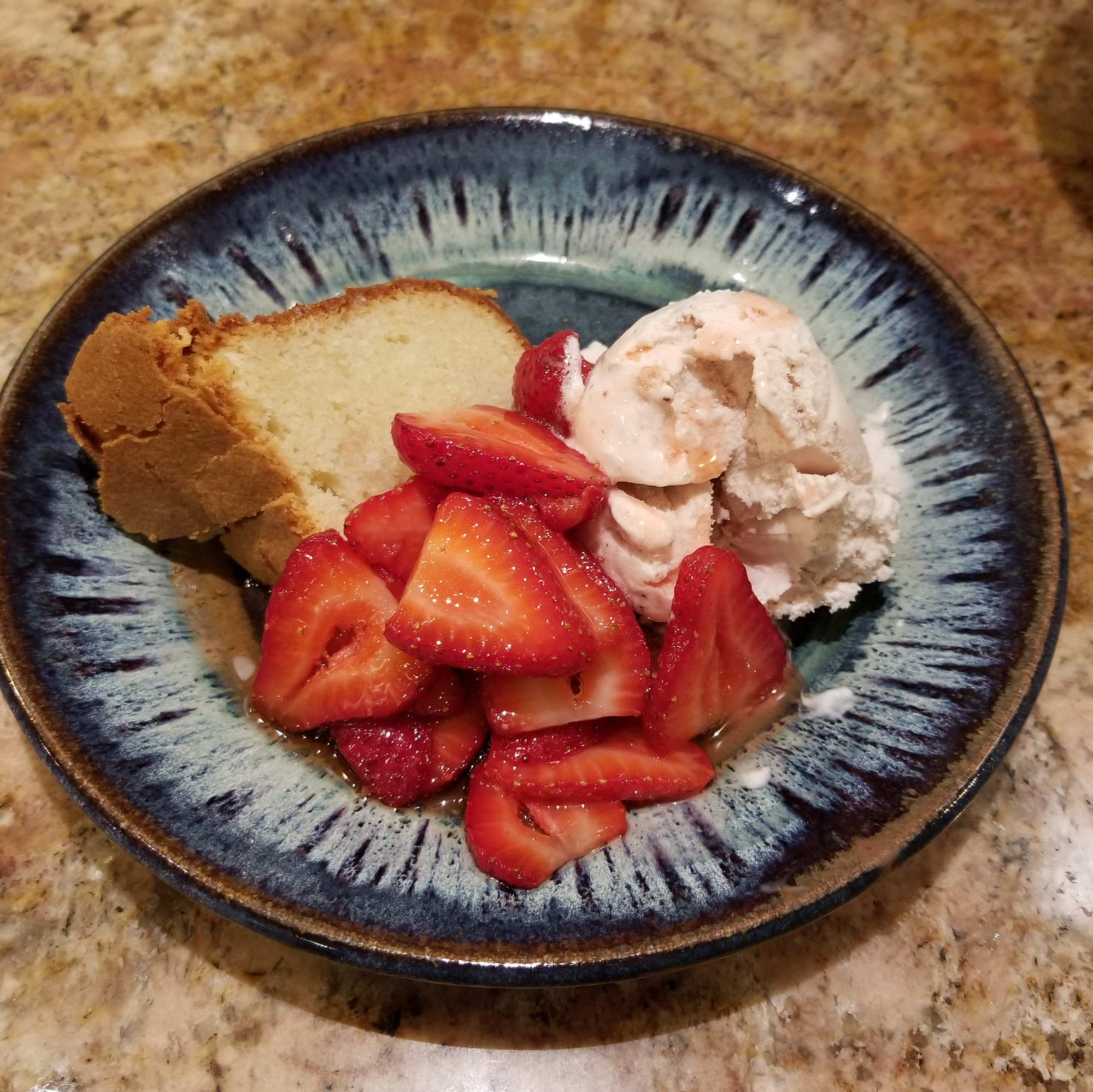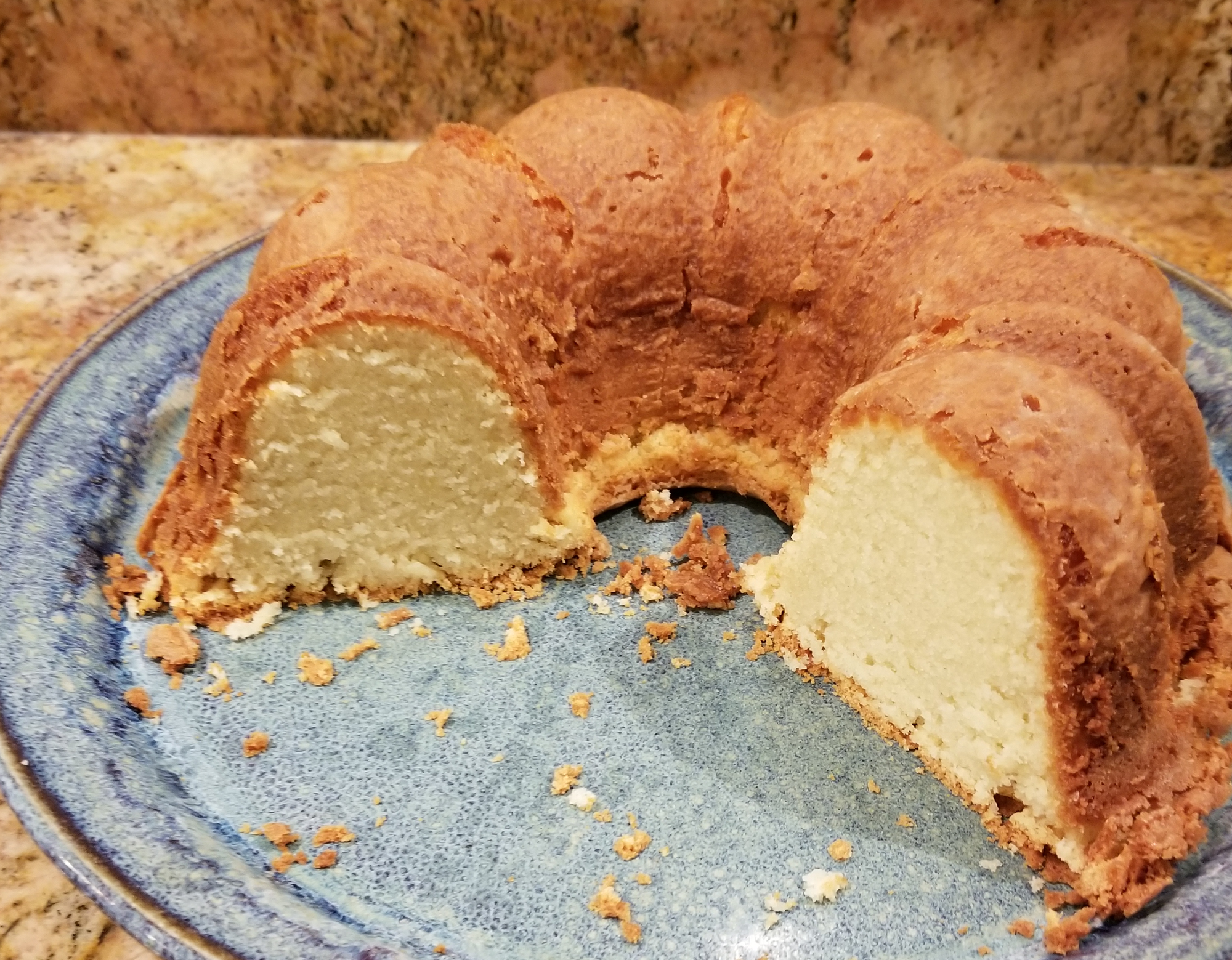Sean I'd say the best one came from Tupelo Mississippi – The Proclaimers
Pound cake has a long and venerable history in America, originally brought to the country by colonists from England. Cookbooks were by no means unheard-of, but were far less commonly available than today; a large part of "learning to cook" involved memorizing recipes – both the ingredient list and the technique.

In those days, pound cake would have been considered a beginner's recipe. I suspect for a lot of little girls, it was the first cake they learned to bake. The ingredient list is short, the ingredients all staples, and the amount of each impossible to forget: it was originally called Pound Cake because it required a pound of each ingredient. The technique requires no separating of eggs or stiffly-beaten egg whites or other such esoterica. I think of it as sort of the ur-recipe for cake, the fore-runner of the "creaming method" still in use today. Indeed, the only thing that would have put this cake in the "challenging" category back then was the amount of hand mixing required: early recipes recommended beating the cake batter vigorously for an hour! If you have an electric mixer, this is definitely the time to use it. You'll note that even with a mixer, the beating time is longer than for many cakes. True pound cake contains no leavening except the air beaten into the batter, so the texture will only be right if the beating is thorough.
I've often wondered about the size of those early pound cakes. Modern pound cake recipes are actually half-sized already. This is less obvious, because the ingredient amounts have been translated into volumes, but the modern "pound cake" actually requires about a half-pound of each ingredient. Even at that, a half-pound cake is a lot of cake: two big loaves, or a full-size angel food pan, or a full-size bundt pan. Enough to feed a crowd, indeed. I can only imagine that the original pound cake was baked in something the size of a dishpan. (If anyone knows how it was actually baked, please leave a comment – I would love to know!)

Here, then, is a half-half-size pound cake: a quarter-pounder, if you will. We find this to be still a generous size for a small family, accommodating several guests and/or second helpings. This recipe is an example of how simple but excellent ingredients and a basic technique can combine to create synergy. The resulting cake is lush with butter and vanilla, with a sweet crackle to the crust and a fine, moist crumb. It's good enough to serve unadorned with a beverage, and wonderful with any and all summer fruits or ice cream. As it bakes, the warm buttery baking smell will bring people flocking to the kitchen. The recipe was reputedly a favorite of Elvis Presley's: if that's true, the King of Rock and Roll was onto something.
Notes
This is a gluten-free cake. If you do not want a gluten-free cake, you can substitute regular cake flour for the gluten-free flour.
I don't know how Elvis served his pound cake; here I've added sweetened strawberries and Strawberry Balsamic ice cream from Blue Cow in Roanoke, Virginia. If you ever find yourself in Roanoke, you owe it to yourself to stop by and sample the ice cream; I have no affiliation with the company, just happen to believe it's the best ice cream around. Sitting on their balcony watching the Roanoke River and enjoying a flight of imaginative and unique ice cream flavors....life doesn't get any better!
Inspiration
I adapted this recipe from "Whipping Cream Pound Cake" in Jane and Michael Stern's A Taste of America. They got the recipe from a Tupelo, Mississippi native who had supplied many pound cakes to the Presley household and wished to remain anonymous.
Pound cake is a such a standard feature of American baking that recipes for it abound: this one uses whipping cream instead of the usual milk, but it otherwise pretty faithful to the tradition. I was skeptical about putting the cake into a cold oven (ovens vary a lot in how fast they preheat, so this seemed like introducing a big unknown into the equation). But who am I to tinker with success?


Comments powered by Talkyard.